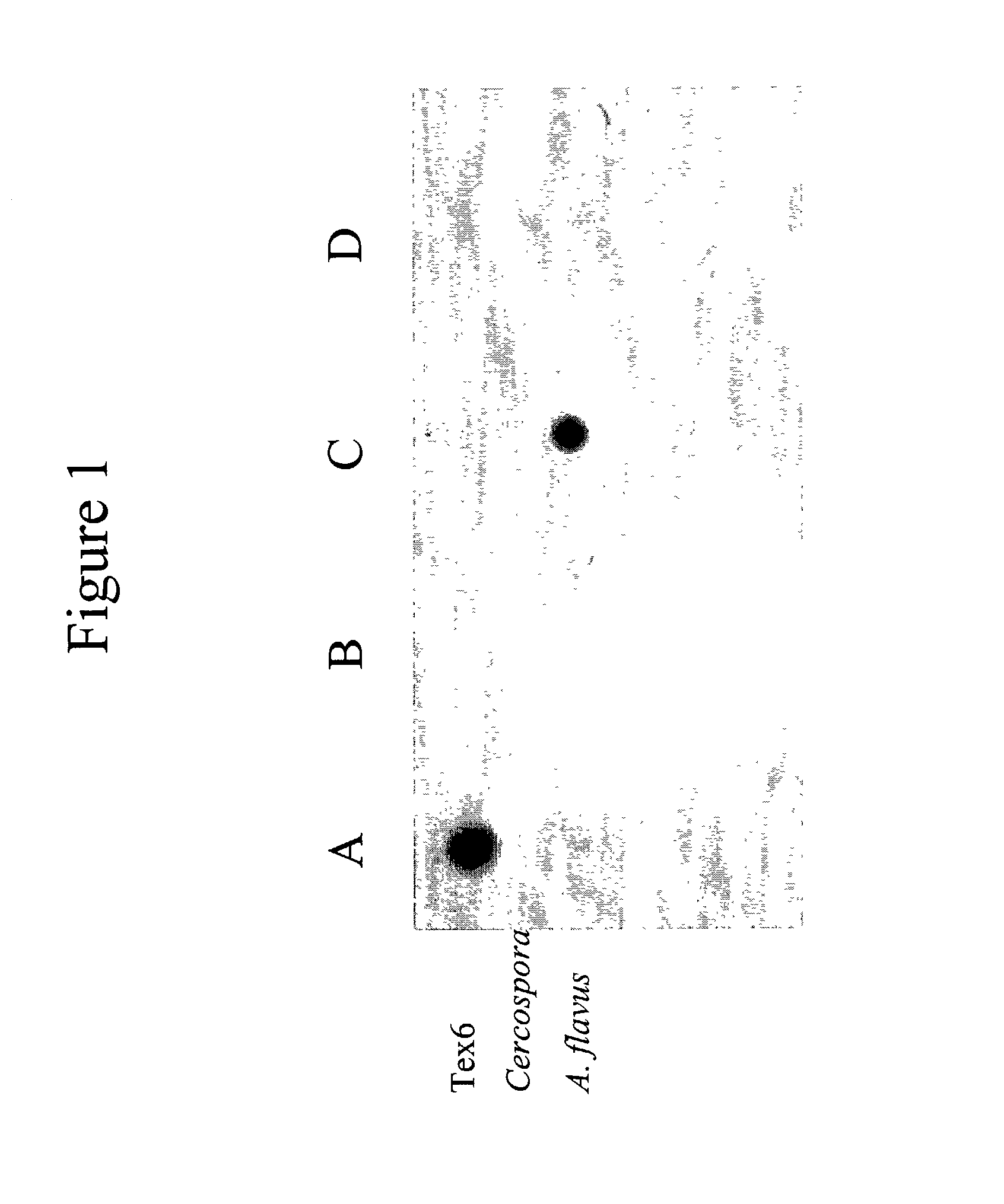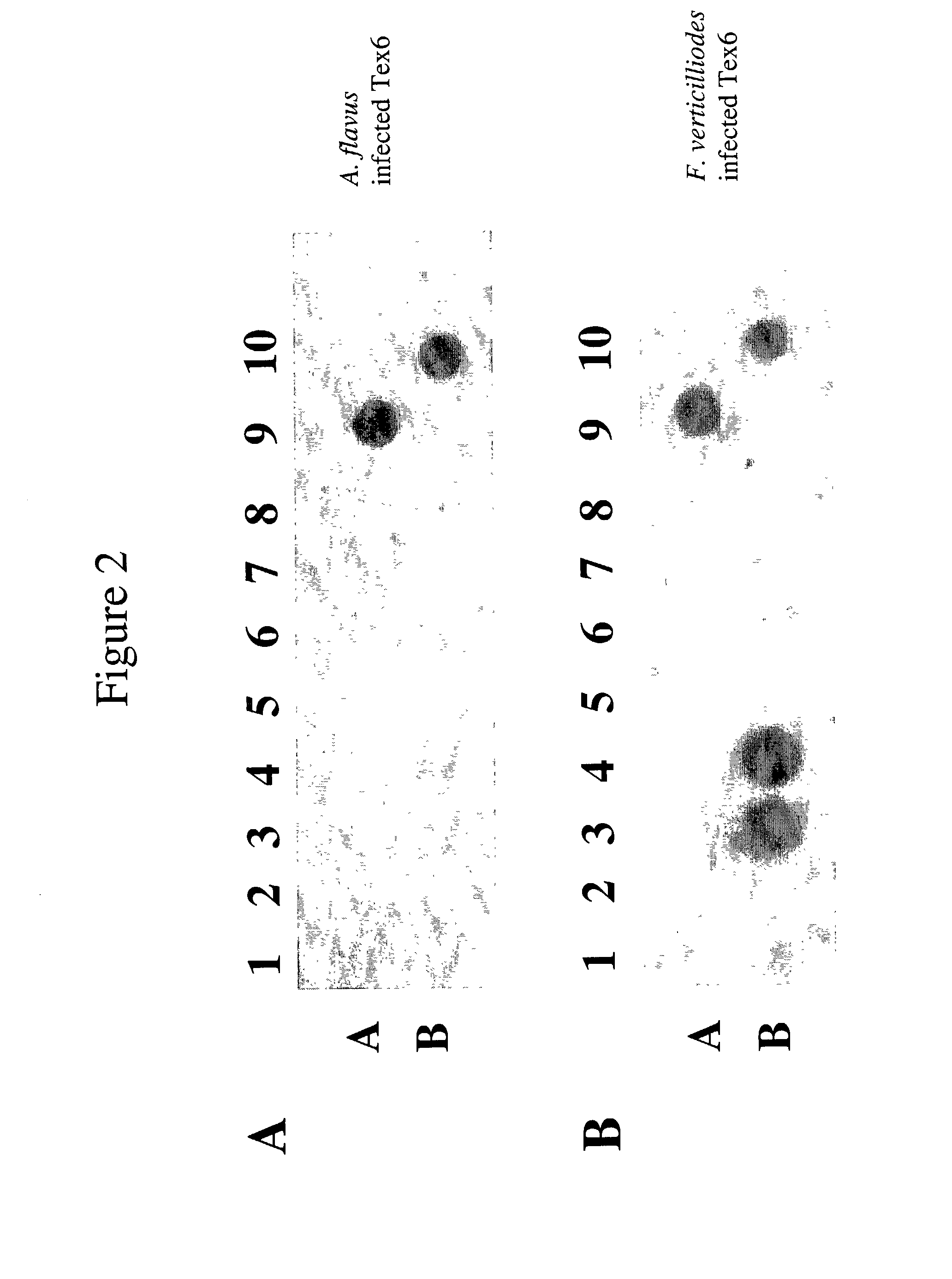Infectious disease microarray
a microarray and infectious disease technology, applied in the field of infectious disease microarrays, can solve the problems of false positive tests, easy compromise of test specificity, and limited detection of pathogens in clinical samples, and achieve the effect of increasing the sensitivity of subsequent detection methods and facilitating the automation and reproducibility of subsequent analyses
- Summary
- Abstract
- Description
- Claims
- Application Information
AI Technical Summary
Benefits of technology
Problems solved by technology
Method used
Image
Examples
example 1
[0220] Isolation of RNA from a Clinical Sample
[0221] To a clinical sample on ice (approximately equivalent to about 1.times.10.sup.6-1.times.10.sup.7 cells), 500 .mu.l of guanidinium isothiocyantate stock solution (4M guanidinium isothiocyanate, 25 mM sodium citrate pH 7.0, 0.5% sarcosyl, 0.1M 2-mercaptoethanol) is added. The sample is homogenized and briefly centrifuged to remove insoluble material. 50 .mu.l of 3M sodium acetate pH 4.0 is added to the supernatant, and the mixture is agitated to facilitate mixing followed by brief centrifugation. 600 .mu.l of phenol:chloroform:isoamyl alcohol (25:24:1, vol / vol) saturated with 10 mM Tris-HCl pH 7.5 and 1 mM EDTA is added to the supernatant, and the mixture is agitated to facilitate mixing followed by incubation on ice for 15 minutes. The mixture is centrifuged at 10,000.times.g for 20 minutes at 4.degree. C., and the aqueous layer is transferred to a new tube. To the aqueous layer, 1 ml of ice-cold absolute ethanol or 500 .mu.l of is...
example 2
[0222] Random Hexamer Primer PCR Amplification of Genomic DNA
[0223] High molecular weight DNA is extracted from a biological sample using a standard method. The high molecular weight DNA is digested in an appropriate volume of 200 .mu.g / ml proteinase K, 10 mM Tris-HCl (pH 8.3), 50 mM KCl, and 0.1% TRITON-X-100.RTM. detergent (available from Sigma Chemical Company of St. Louis, Mo., United States of America) for about 3 hours or up to 3 days at 37.degree. C. Digested DNA can be purified prior to amplification, for example by precipitation with alcohol.
[0224] RP-PCR is performed in two phases. Phase I reactions are run in a 10 .mu.l solution containing 0.025 units of AMPLITAQ.RTM. DNA polymerase (PerkinElmer of Wellesley, Mass., United States of America), 10 mM Tris (pH 8.3), 50 mM KCl, 1 mM MgCl.sub.2, 0.001% gelatin, 0.02 mM each dNTP, 10 .mu.M of random hexamers (Boehringer of Germany), and 4 .mu.l of a digested DNA sample. The DNA sample can comprise 4 pg to 40 ng of high molecula...
example 3
[0225] Random Amplification of Genomic DNA Using a RAPD-Type Primer
[0226] High molecular weight DNA is extracted from a biological sample using a standard method. The high molecular weight DNA is digested in an appropriate volume of 200 .mu.g / ml proteinase K, 10 mM Tris-HCl (pH 8.3), 50 mM KCl, 0.1% TRITON-X-100.RTM. detergent (available from Sigma Chemical Company of St. Louis, Mo., United States of America) for about 3 hours or up to 3 days at 37.degree. C. Digested DNA can be purified prior to amplification, for example by precipitation with alcohol.
[0227] A RAPD-type primer comprising a 10-nucleotide arbitrary sequence is obtained from Operon Technologies of Alameda, Calif., United States of America. Random amplification using the RAPD-type primer is performed using genomic DNA from a biological sample as a template as described by Hopkins & Hilton (2001) BioTechniques 30(6):1262-1267.
PUM
| Property | Measurement | Unit |
|---|---|---|
| volume | aaaaa | aaaaa |
| volume | aaaaa | aaaaa |
| diameter | aaaaa | aaaaa |
Abstract
Description
Claims
Application Information
 Login to View More
Login to View More - R&D
- Intellectual Property
- Life Sciences
- Materials
- Tech Scout
- Unparalleled Data Quality
- Higher Quality Content
- 60% Fewer Hallucinations
Browse by: Latest US Patents, China's latest patents, Technical Efficacy Thesaurus, Application Domain, Technology Topic, Popular Technical Reports.
© 2025 PatSnap. All rights reserved.Legal|Privacy policy|Modern Slavery Act Transparency Statement|Sitemap|About US| Contact US: help@patsnap.com


